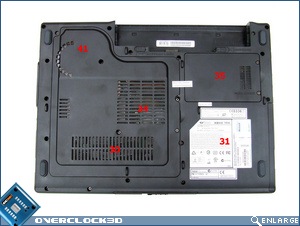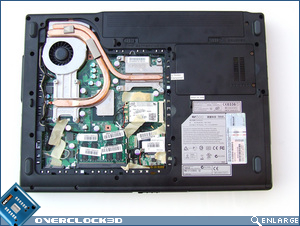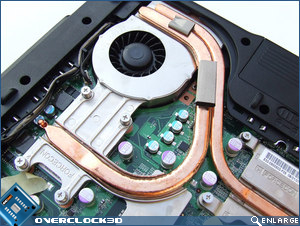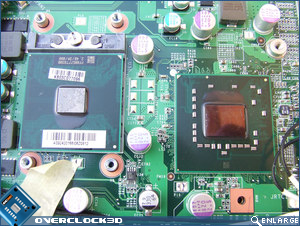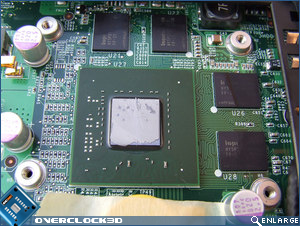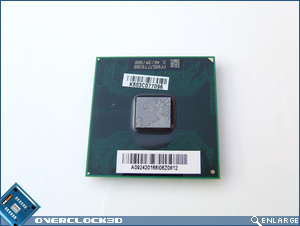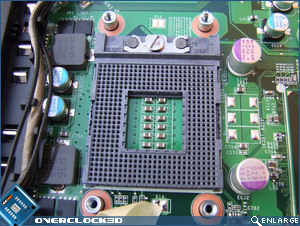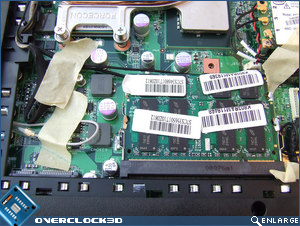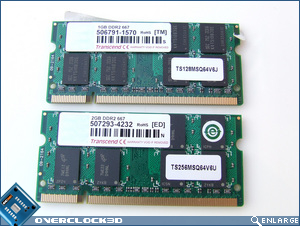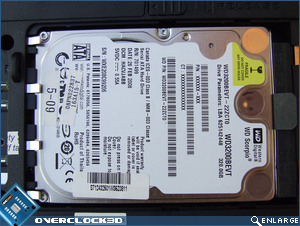MSI TurboBook GX600 Gaming Notebook
Looking Inside & Heat Testing
Â
MSI have chosen to cool the GX600 with a heatpipe assembly manufactured by ForceCon. The cooler features two large copper heatpipes (one dedicated for CPU, the other Northbridge and GPU) that draw the heat away from the components to the aluminium encased blower fan at the back of the notebook.
Â
The effectiveness of this cooling configuration was tested by running an instance of OCCT; a stability testing tool; on the notebook for a total of one hour. Additionally the notebook was also placed in “CPU Turbo” mode to validate the stability of the overclock. During this test, the T8300 CPU reached a maximum temperature of 74°C – but let’s see how much of that was transferred to the base of the laptop…
Â
Â
Â
As we can see from the temperature overlay in the image top-left, the readings taken from various points of the casing pretty much mirror the location of the components. However, it has to be said that with a maximum temperature of 41°C, the cooling system actually does an excellent job at transferring the heat – and with relative silence too.
Â
Â
Â
Future upgradeability of the CPU is provided in the form of a 478-Pin Micro-FCPGA socket with a twist-to-lock mechanism. This should certainly be seen as a plus for gamers who are more likely to perform their own hardware upgrades and modifications on the notebook than an average user.
Â
For obvious reasons, the NVIDIA 8600M GT GPU is soldered directly to the motherboard and a collection of four Hynix 128MB GDDR3 (700mhz) memory chips surround it.
Â
Â
Two banks of SODIMM memory make up the 3GB of ram installed in the GX600. MSI probably avoided installing a full 4GB inside the notebook as (up until recently) Vista would only display a maximum of 3GB from within system properties.
Â
Â
Last but not least we come to the 320GB Western Digital Scorpio hard disk. While the drive is most certainly large, it unfortunately suffers from a rather average 5400RPM rotation speed with 5.50ms latency. For a notebook aimed at gamers where the loading times are of the essence, we would really have expected to see a faster 7200RPM drive installed. Even if it came at the cost of a lower capacity drive.



